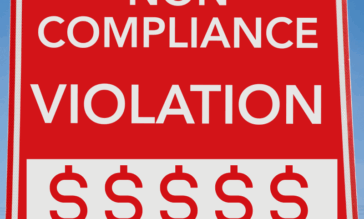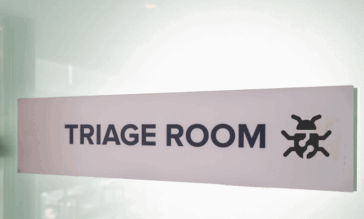How to Reduce Data Risks at Credit Unions

Updated May 15, 2024
Credit unions are the quiet, neighborly, small-town of the bustling metropolitan Financial Services world. Whether through earned reputation or genius marketing, when someone says “credit union,” it evokes an image of a friendly local business emphasizing personal connections and mutual benefits over corporate profits. A calm financial organization where nothing dangerous ever happens. Yet danger lurks even here… Surprisingly, credit unions are a primary target of cybercriminals, falling just behind manufacturing in terms of vulnerability. Worse yet, when a breach occurs, the costs incurred by credit unions can skyrocket to a towering 40% higher than any other industry.
What’s fueling these costs? These expenses arise from the volatile combination of the sensitive nature of the data they handle and rigorous regulatory requirements, such as SOX, GLBA, PCI-DSS, and GDPR. Non-compliance with any of these regulations results in more than a slap on the wrist; it can be a financial and legal nightmare. The damage can range from hefty fines to potential criminal charges for executives if they can be proven negligent in implementing the appropriate security controls.
As a result, many credit unions fortify their defenses against cyber-attacks and threat actors to steer clear of crippling fines, broken customer trust, and a potential reputational meltdown. To mitigate such risks, they may employ stringent perimeter security controls. However, cybercriminals are innovative when looking to steal valuable data. They slither into systems through the backdoors, target any perceived weakness, and sneak malware in through files sent via existing third-party connections, allowing them to steal or modify sensitive data.
In this article, we’ll discuss how these threats elude detection and provide practical guidance on reducing such risks.
Paths of Ingress for File Threats
Sensitive data such as Personally Identifiable Information (PII) and account information are major driving forces for attackers, making them a prime focus for credit unions to protect. This information is highly valuable on the black market and, if compromised, can lead to severe consequences for individuals, including identity theft and fraud. For organizations like credit unions, where PII is abundant, protecting this data is not just a regulatory requirement but a critical aspect of maintaining customer trust and operational integrity.
Digital Transformation Expands Threat Vectors
For credit unions undergoing digital transformation, the problem can intensify. Implementing third-party tools streamlines digital onboarding, increasing organizational interconnectedness and creating more avenues for rapid data transfer. These tools serve as a double-edged sword – boosting productivity while simultaneously increasing the risk of sensitive data being transmitted or accidentally sharing data that includes hidden threats.
Email as a File Threat Vector
Email represents a primary battlefield for cyber threats, with attackers craftily concealing toxic code in seemingly innocuous documents and image attachments. Verizon research reveals that a staggering 35% of ransomware attacks originate from an email, excluding other forms of malware and hazardous macro-infected content.
Financial services organizations, especially credit unions, are finding themselves on the frontlines. Much of the reason is their routine sharing of internal files among branches, auditors, and staff. Often laced with macros, these files are integral to their operations. The disabling or loss of these macros would not only cripple functionality, such as auto calculations and projections but also induce severe operational disruption. Yet, these macros are precisely what attackers seek to exploit. Preserving the integrity of these macro-embedded files is paramount for the smooth functioning of these organizations.
Malicious code including rootkits, code that calls out and downloads ransomware, keyloggers, and backdoor terminals can be delivered via macros and other elements of files, including embedded images. These all open the organization up to additional risk as they steal data or allow attackers to set up more complex attacks deeper within the organization, inside of perimeters such as firewalls. They hide in seemingly innocuous files, and as the file executes, they launch their toxic payload, secretly starting their attack process.
File-Borne Threats in Web Downloads
Web downloads present another possible avenue for hidden threats. Staff members unwittingly become accomplices as they access online resources riddled with concealed malicious code—a task that is, regrettably, essential for numerous job roles. These may even come in the form of drive-by downloads that piggyback on installations of legitimate software from these sites, adding the additional unwanted program at the same time and capitalizing on any elevated privilege the original installation had.
Cybercriminals also cunningly compromise less secure sites to upload malicious content, planting malicious content on sites that are predictably attractive to users in the financial sector, including financial-focused blogs, fintech industry discussion boards, and websites featuring industry-specific data. This is particularly concerning as information gathering from the web is a necessary aspect of many job functions within credit unions. These cleverly deployed payloads, downloaded directly to user endpoints, often slip past perimeter defenses and rely on local antivirus solutions to identify and neutralize the threat.
Files Uploaded to Data Lakes
Data lakes, whether in the cloud or on-premises, serve as robust repositories for consolidating data harvested from diverse sources—a fundamental aspect of loan and insurance application procedures in many financial service organizations. Applicants populate these data lakes with sensitive documents, such as proof of employment, income records, and asset ownership proofs—all information that is potentially harmful if mishandled.
Despite appearing harmless, these documents and images uploaded to data lakes and cloud storage can harbor concealed threats. Once nestled in these ‘trusted’ storage locations, the files often bypass rigorous security scrutiny during staff or application access. This leaves a gap in control, opening the door for files laden with malicious content. Innocent-looking yet insidious, these files release their harmful payloads—malware, ransomware, or rootkits—when opened for processing, infecting unsuspecting staff members’ or applications’ endpoints.
Content Collaboration or Malware Collaboration?
With the escalating shift towards remote and mobile work, collaboration tools have become indispensable for maintaining team connectivity. However, this convenience can breed complacency; users often share business files—even those from external sources—without due diligence. Since hidden threats may not immediately reveal their destructive intent, users can inadvertently distribute perilous files, thereby rapidly propagating infections across the organization.
The role of collaboration tools extends beyond internal coordination, often serving as a platform for banks to interact with customers. Tools such as Slack, Salesforce, Box, Dropbox, and OneDrive streamline workflows, facilitate information gathering, digital signatures, and file uploads. However, these seemingly benign data exchanges may harbor covert threats, increasing organizational risk due to the lack of control over the security protocols adopted by customers and partners. Moreover, the intrinsic trust often associated with collaboration tools can make them particularly vulnerable. Thus, system breaches on the customer, partner, or vendor sides can contaminate the shared data and files, spreading corruption undetected.
Counteracting Threats to Financial Data
File sanitization, also known as Content Disarm & Reconstruction (CDR), eliminates hidden threats in files before they can penetrate secure perimeters. While traditional security measures such as antiviruses serve as an initial defense layer, they rely on detection to stop threats, and this approach can fail to identify zero-day and untracked threats.
File sanitization/CDR mitigates potential risks by sanitizing and reconstructing files using only their safe components. This process eliminates high-risk components, known bad elements, and suspicious code hidden within files.
Sanitizing High-Risk Data
DDR technology employs advanced methods such as anonymization and tokenization to protect sensitive data effectively. Anonymization irreversibly alters identifiable data so that the individuals the data describes remain anonymous, ensuring that personal details cannot be traced back to the original data subject. Tokenization, on the other hand, replaces sensitive data elements with non-sensitive equivalents, known as tokens, which are useless outside the specific system or environment for which they are designed. These strategies enhance data security by ensuring that sensitive information is removed or obscured, protecting against data breaches.
Seamless Integration
One of the significant benefits of contemporary file sanitization is its seamless integration into existing infrastructure. Instead of necessitating extensive code alterations and large-scale integration projects, modern file sanitization solutions can be implemented as an API, communicating with your current technology. This enables credit unions to swiftly onboard with minimal alterations to existing tech systems.
The advantage of an API-based integration is that it offers protection without requiring end-user intervention. As data flows through the solution, sanitization occurs, reconstructing files from only known safe components and eliminating threats in the process. For credit unions, this automated and repeatable security process aids in reducing risk in a quantifiable, auditable way, ensuring continuous compliance.
No Loss of File Functionality
File sanitization solutions vary in efficacy; for credit unions, choosing the right solution is pivotal. Lower-end technologies simply convert the file into an uneditable format, like turning an Excel spreadsheet into a static PDF – which isn’t particularly practical.

However, advanced file sanitization or Content Disarm & Reconstruction (CDR) solutions provide a near-perfect replica of the original data. These maintain crucial functionalities such as formatting, formulas, and safe macros while purging any threats. Given the significance of macros and formatting in providing context or enabling essential calculations in financial data, such sophisticated CDR solutions become indispensable for credit unions.
Votiro is an Advanced Defense for Credit Unions
Credit unions must insist on the highest quality solutions when evaluating file sanitization with DDR and CDR. Votiro is a leader in data protection, dedicating its efforts to providing a top-tier DDR solution that integrates CDR with AV to provide a more complete solution to data security.
Votiro’s advanced DDR removes sensitive data from files, preventing attackers from stealing them. Our CDR augments this via high-quality reconstruction that rebuilds files using only known-safe components, thus preserving the intended functionality. This ensures that no crucial context or fidelity is lost during the rebuilding process.
Votiro’s API-centric solution effortlessly integrates into existing business workflows, enabling credit unions to instantly benefit from protection against cyber threats. Implementation times are impressively quick, with Chrome Plugin installations taking as little as 10 minutes and on-premises installations taking just 90 minutes.
Contact us today to learn more about how Votiro protects data for credit unions while not impeding productivity.
And if you’re ready to try Votiro for yourself, start today with a free 30-day trial.
News you can use
Stay up-to-date on the latest industry news and get all the insights you need to navigate the cybersecurity world like a pro. It's as easy as using that form to the right. No catch. Just click, fill, subscribe, and sit back as the information comes to you.
Sign-up Here!
Subscribe to our newsletter for real-time insights about the cybersecurity industry.



